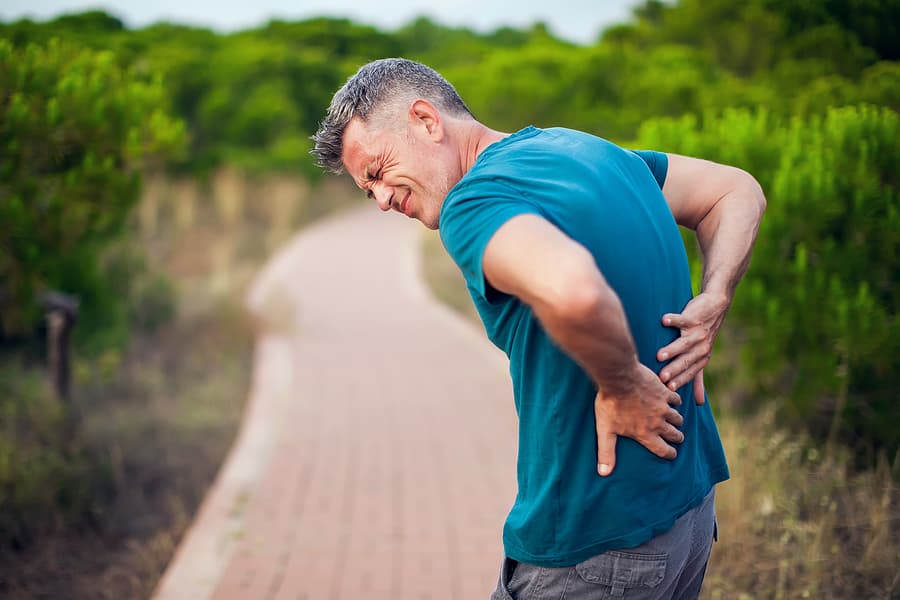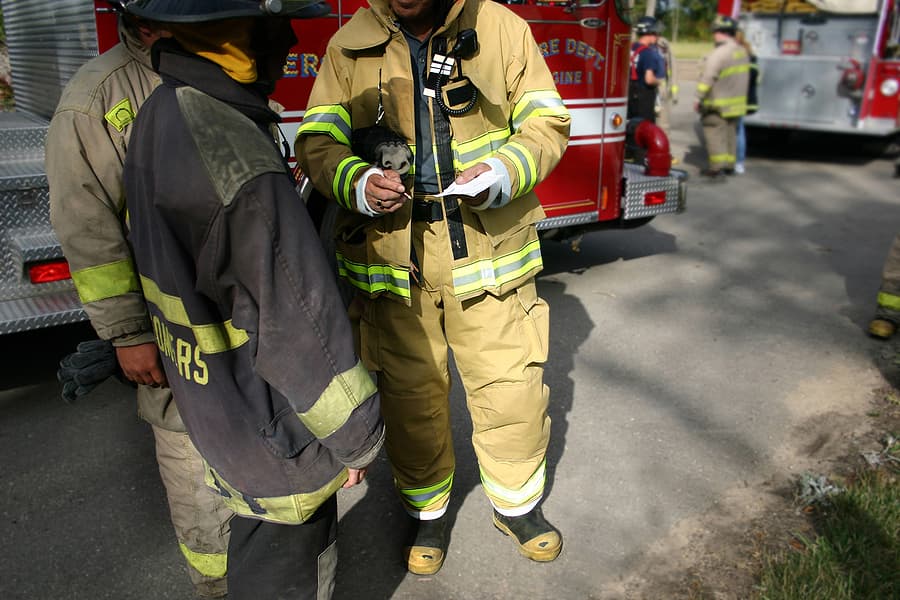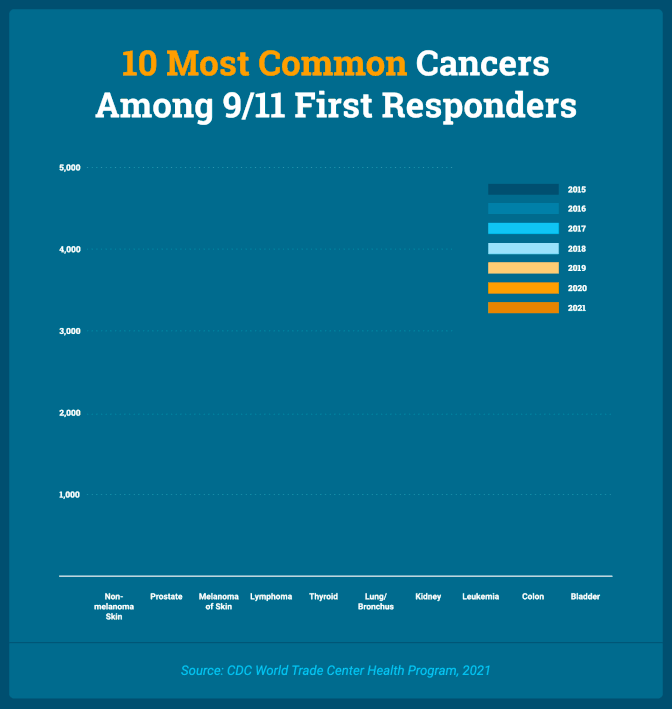Exposure to WTC Dust Increases Neuropathy Risk by 15 Times

The past twenty years have taught the medical community several things about toxic exposure. We now know that individuals exposed to the toxic dust from the collapsed towers on September 11th, 2001, are at a higher risk for cancer, respiratory, and digestive system diseases.
Studies also show that the responders and volunteers who performed rescue, recovery, and cleanup operations at the site are at an increased risk of developing a nerve condition known as peripheral neuropathy. The same is true for those who were living, working, or attending school or daycare in Lower Manhattan in the months following the disaster. These groups are up to 15 times more likely to develop the condition.
What Is Peripheral Neuropathy?
The peripheral nervous system is responsible for sending messages from the central nervous system (the brain and spinal cord) to the rest of the body through the peripheral nerves located outside of the brain and spinal cord.
Peripheral neuropathy involves damage to the peripheral nerves that results in symptoms such as:
- Gradual onset of numbness or the feeling of pins and needles in the hands or feet that can spread into the arms or legs.
- Sharp, jabbing, burning, or throbbing pain.
- The hands or feet are extremely sensitive to the touch.
- Experiencing pain while doing activities that generally aren’t painful, such as standing up or covering the feet with a blanket.
- Feeling like you’re wearing gloves or socks when you’re not.
- Frequent falls and lack of coordination.
- Muscle weakness, or even paralysis.
Sometimes, other symptoms can be present, including heat intolerance, excessive sweating, bowel, bladder, or digestive issues, and sudden drops in blood pressure that can lead to light-headedness.
Neuropathy disrupts nerve signals throughout the body in three different ways:
- Signals normally sent are lost
- Inappropriate signals are received when they shouldn’t be
- Errors in nerve signaling distort the messages sent
Hundreds of Varieties of the Same Condition
There are hundreds of different types of peripheral neuropathy, with each producing unique symptoms and prognosis. Neuropathy that affects the motor nerves will result in weakness in the muscles used for walking, grasping, or talking. Neuropathy that affects the sensory nerves will change how objects feel against the skin, the body’s reading of temperature, and the level of pain experienced in a minor injury.
Neuropathy of the autonomic nerves can affect the body’s involuntary responses, such as breathing, digesting foods, and the functions of the heart and glands. Most people with peripheral neuropathy will experience impacts for all three types of nerve impacts, with one type being more predominant than the others.
What Causes Peripheral Neuropathy?
The most common cause of peripheral neuropathy among the general population is diabetes. More than half of people with diabetes suffer from this condition.
However, there are some other causes, including:
- Some autoimmune diseases, including Sjogren’s syndrome, lupus, or rheumatoid arthritis.
- Hormonal imbalances that disturb metabolic processes and can result in increased pressure on the peripheral nerves.
- Certain viral and bacterial infections, such as Lyme disease or shingles.
- Some inherited disorders.
- Cancerous tumors related to the body’s immune response.
- Bone marrow disorders and other types of diseases.
Alcoholism, certain medications such as chemotherapy drugs used to treat cancer, vitamin deficiencies, and an injury that places pressure on the nerve can also cause the condition. However, WTC responders and residents exposed to toxic dust are also at risk. Exposure to certain heavy metals and other poisons found in the dust blanketed Lower Manhattan for months after the attack.
Even if you have other risk factors, if you developed neuropathy after you lived, worked, volunteered, or studied in the exposure zone, you may qualify for the VCF or WTCHP.
How Do Doctors Diagnose Peripheral Neuropathy?
Doctors generally diagnose peripheral neuropathy with:
- A complete medical history, which includes information about the symptoms the patient is experiencing, what seems to trigger those symptoms throughout the day, what seems to relieve them, the individual’s work environment and social habits, and any exposure to toxins that they’ve experienced.
- Physical and neurological exams that can reveal body-wide diseases such as diabetes, which can cause neuropathy and the presence of neurological disorders, and determine the extent and type of nerve damage experienced.
- Body fluid tests to search for vitamin deficiencies, diabetes, liver or kidney dysfunctions, or other conditions that could explain the neuropathy.
Once doctors diagnose the condition, they can perform other tests to determine the extent of neuropathy.
Neuropathy Treatments
Just as there are many types of neuropathy, many methods can treat the condition or address any underlying causes discovered during testing. Depending on the type and severity of the condition, a doctor may prescribe medication. Suppose the condition most affects motor function. In that case, doctors may recommend braces for the hands or feet or orthopedic shoes.
Why Are Those Exposed to WTC Dust More Likely to Develop the Condition
Studies have shown that 9/11 responders and survivors are at a higher risk of developing neuropathy and that the longer they were exposed to the dust, the higher the risk they face. But what causes this increased risk?
Likely, the heavy metals and complex hydrocarbons, such as polycyclic aromatic hydrocarbons, polybrominated diphenyl ethers, polychlorinated biphenyls, and polychlorinated naphthalenes in WTC dust and fumes further increased the risk for individuals working on cleanup efforts. Repetitive motions during this work resulted in the development of carpal tunnel syndrome, a type of neuropathy.
What Is the New York City Exposure Area?
In addition to having a condition on the list of covered 9/11-related illnesses, individuals exposed to WTC dust who would like to participate in the WTCHP must also show that they were in the New York City exposure area between specific dates.
Those living, working, or attending school or daycare, in the New York City exposure area may participate. The area is south of Houston Street and any block in Brooklyn that is wholly or partially contained in the 1.5-mile radius around the World Trade Center.
Responders who worked on the cleanup efforts at Ground Zero have an expanded exposure area that includes the area of Lower Manhattan south of Canal Street and certain barge-loading piers, and the Staten Island Landfill.
Is Peripheral Neuropathy a Covered Condition With the WTCHP?
The James Zadroga 9/11 Health and Compensation Act established the World Trade Center Health Program (WTCHP) in 2011 to provide free medical care and monitoring for individuals who were exposed to the toxins at 9/11 terror attack sites, particularly Ground Zero, where exposure covered a large area of Lower Manhattan for several months.
In addition, the WTCHP provides a certification process for medical conditions caused by the toxins found in the WTC dust. The other federal 9/11 benefits program—the September 11th Victim Compensation Fund (VCF)—uses this list of covered conditions as part of the eligibility criteria for compensation for 9/11-related illnesses.
The WTCHP—which the National Institute for Occupational Health (NIOSH), part of the Centers for Disease Control and Prevention (CDC), administers—considers adding new conditions either by directive of the administrator or if someone submits a valid petition requesting them to do so.
The conditions receive careful consideration, focusing on scientific studies that can link an increased prevalence of the particular illness with the toxic exposure experienced by those who worked, lived, or attended school or daycare in the area impacted by the World Trade Center dust plume.
There have been two petitions (numbers 10 and 15) submitted by those in the scientific and medical community seeking to have neuropathy added to the list of covered conditions. Currently, carpal tunnel—a type of neuropathy most often caused by repetitive motion—is on the list of covered conditions for the WTCHP. Both petitions regarding adding peripheral neuropathy were denied, with the denial being due to a lack of sufficient evidence to prove the link between 9/11 exposure and peripheral neuropathy.
Denied Coverage Equals Denied Benefits
By denying to add neuropathy to their list of covered conditions, despite studies clearly showing a significantly increased risk of responders and residents developing the condition after their exposure to WTC dust, the WTCHP prevents individuals from these groups from obtaining the certification they need to obtain benefits from that program, as well as the ability to seek compensation through the VCF.
A Lengthy List of Other Covered Conditions
For those suffering from neuropathy after being exposed to WTC dust, while coverage isn’t available (yet) for that condition, there is a rather lengthy list of conditions covered by the federal 9/11 programs. As some of these covered conditions are linked to neuropathy, those other 9/11-related ailments can qualify you for the program.
Additionally, suppose the WCTHP or VCF adds neuropathy to the list of covered conditions. In that case, you will have the ability to seek certification of that condition. You can apply for compensation through the VCF. Many individuals who have received compensation through the VCF have been diagnosed with more than one certified condition.
Other Programs Consider Peripheral Neuropathy a Disability
Peripheral neuropathy can present in so many different ways that while it may annoy one sufferer, it can be a disabling condition for another. Neuropathy is a Social Security Administration disability. Some individuals can obtain benefits from that program if their symptoms are severe.
Some severe symptoms include:
- Disorganized motor function that affects at least two extremities.
- A significant limitation in physical functioning that affects the ability to carry on a conversation or remember information.
- An inability to concentrate or manage daily routine tasks.
You must meet several criteria to qualify to receive benefits from the Social Security Administration. However, these benefits are often available alongside benefits provided by the WTCHP and the VCF. An experienced 9/11 benefits attorney can assist you in determining which federal programs you are eligible to apply for or file a claim for and can even assist you in the application or filing process.
74 Percent of Participating Responders Suffer From At Least One 9/11-Related condition

Around 74 percent of the 9/11 responders participating in the WTCHP have suffered from at least one physical or mental health condition related to the toxic exposure they experienced in the New York City exposure area on or in the months that followed 9/11. Twenty percent of these responders have been diagnosed with 9/11-related cancer, and 28 percent have been diagnosed with a mental health condition.
The most common 9/11-related illnesses suffered by 9/11 responders are chronic rhinosinusitis (nasal inflammation) and gastroesophageal reflux disease (GERD). The third most likely condition to be acquired by those in the 9/11 responder group is cancer. Prostate cancer, in particular, is common among the survivor group, as most individuals who make up this group of participants are male.
Are you suffering from a 9/11-related condition? Let us help you explore your options for obtaining assistance. Contact us for your free case evaluation.



